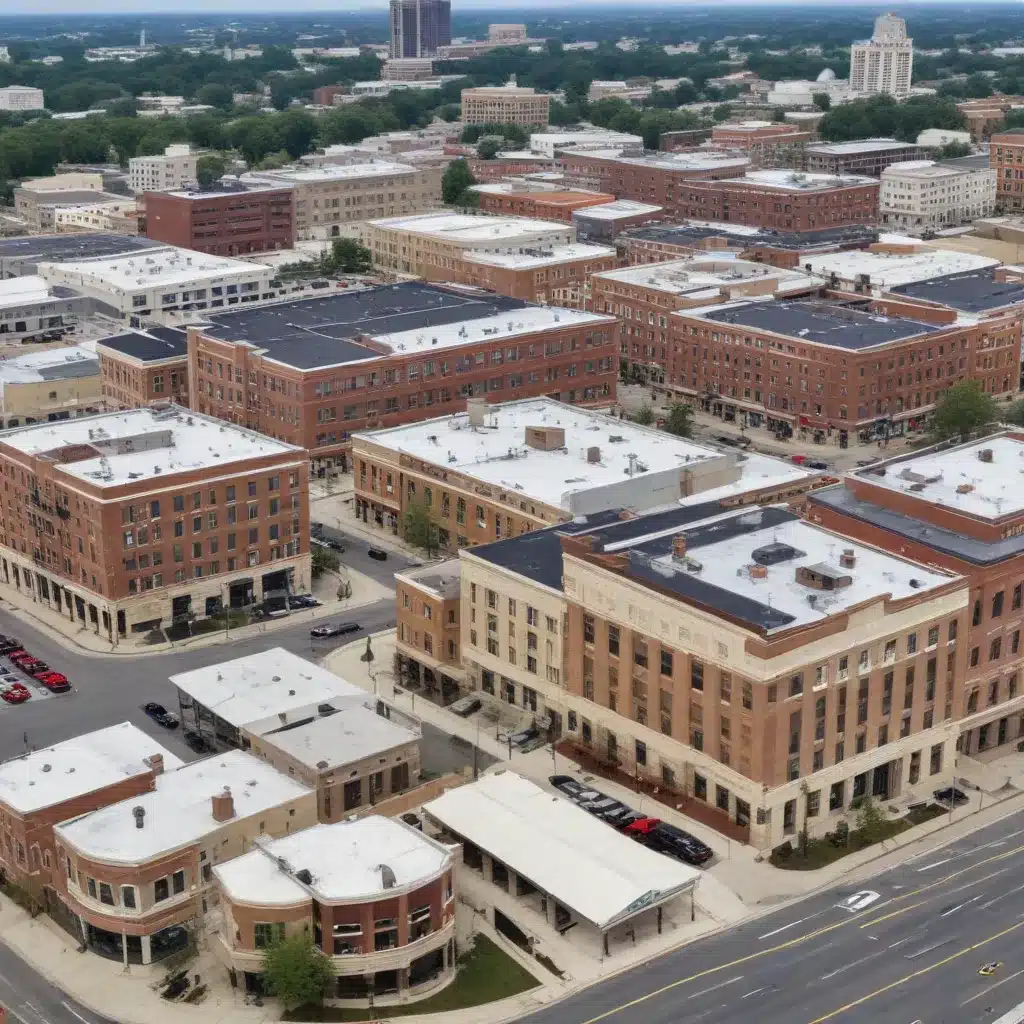
Commercial Property Revitalization in Ohio
Ohio’s cities are leading the way in collaborative efforts to breathe new life into commercial properties, transforming once-neglected urban areas into vibrant hubs of economic activity. By leveraging strategic partnerships, innovative funding models, and a shared vision for sustainable development, these cities are redefining the landscape of commercial property revitalization.
Regional Collaboration
At the heart of this revitalization movement is a spirit of regional collaboration. Cities across Ohio are recognizing the power of working together, pooling their resources, and sharing best practices to tackle the challenges of commercial property redevelopment. This collaborative approach has resulted in a synergy of expertise, funding, and community engagement that is driving transformative change.
One shining example of this collaborative effort can be found in the partnership between Kent State University and the city of Kent. When Kent State’s former president, Lester A. Lefton, bluntly described parts of downtown Kent as “a piece of crap,” it sparked a renewed commitment to revitalize the area. Over the following years, the city and the university worked in tandem, investing over $170 million in public and private funds to transform downtown Kent. The results are striking – entire blocks were redeveloped, the Kent State University Hotel and Conference Center was constructed, and the Lefton Esplanade was created to seamlessly connect the campus and the city center.
Similarly, the Village of East Palestine has recently announced a collaboration with Small Nation, a Bellefontaine-based company known for its expertise in revitalizing small-town main streets. This partnership, facilitated by JobsOhio and the Lake to River initiative, will provide East Palestine with the resources and guidance to develop a strategic plan for downtown revitalization. By tapping into Small Nation’s proven “if-you-build-it-they-will-come” approach, East Palestine aims to breathe new life into its commercial core, creating spaces that attract businesses and foster entrepreneurial growth.
Economic Drivers
At the core of these revitalization efforts are the economic drivers that are propelling them forward. Cities are actively working to attract businesses, both large and small, to fill vacant commercial properties and breathe new life into their local economies. By offering incentive programs, streamlining zoning and regulations, and leveraging public-private partnerships, these cities are creating an environment conducive to business growth and investment.
In Middleburg Heights, the city’s collaboration with Cleveland Clinic and Premier Development Partners is a prime example of this approach. The construction of a new 93,000-square-foot medical outpatient center on the site of a former K-Mart store not only revitalizes a vacant commercial property but also brings significant economic benefits to the community. This project not only expands access to healthcare services but also generates new professional jobs and drives economic activity in the Middleburg Heights area.
These economic initiatives are complemented by a focus on boosting local entrepreneurship. Cities are recognizing the power of supporting small businesses and the crucial role they play in revitalizing commercial districts. By providing incubator spaces, mentorship programs, and streamlined permitting processes, cities are cultivating an environment that fosters the growth of homegrown businesses and encourages the creation of unique, locally-owned commercial offerings.
Urban Revitalization
Alongside the economic drivers, cities are also undertaking comprehensive urban revitalization efforts to transform their commercial landscapes. From adaptive reuse projects that breathe new life into aging buildings to strategic infrastructure improvements that enhance connectivity and accessibility, these cities are reimagining their urban spaces.
In Kent, the revitalization of downtown has been a multifaceted endeavor. The demolition of entire blocks to make way for the Acorn Alley development and the construction of the Kent State University Hotel and Conference Center have not only beautified the area but also created new commercial and hospitality hubs. The Lefton Esplanade, a pedestrian-friendly walkway, has become a symbolic gateway, seamlessly linking the campus and the city center.
Similarly, the East Palestine collaboration with Small Nation is poised to unlock the potential of the village’s downtown. By focusing on rehabilitating empty storefronts and creating spaces that attract both businesses and entrepreneurs, this partnership aims to rewrite the narrative of East Palestine’s commercial core, celebrating its past while fostering a vibrant future.
Policy and Funding
Underpinning these revitalization efforts are strategic policy decisions and innovative funding mechanisms. Cities are actively leveraging incentive programs and zoning regulations to incentivize commercial property owners to invest in their properties, upgrade aging infrastructure, and create spaces that appeal to both businesses and consumers.
Simultaneously, cities are exploring diverse funding sources to support these initiatives. From tax increment financing (TIF) districts that channel increased property tax revenues back into revitalization projects to public-private partnerships that leverage private investment, these cities are finding creative ways to finance their commercial property transformations.
The collaboration between the City of Middleburg Heights, Cleveland Clinic, and Premier Development Partners is a prime example of this approach. By working together, these entities have been able to secure the necessary funding and resources to undertake the renovation of a former retail space into a state-of-the-art medical outpatient center, transforming a vacant commercial property into a community asset.
Conclusion
As Ohio’s cities continue to embrace the power of regional collaboration, economic drivers, urban revitalization, and innovative policy and funding, the landscape of commercial property revitalization is being reshaped. These collaborative efforts are not only beautifying urban areas and attracting businesses but also fostering a sense of community, pride, and economic prosperity.
For homeowners and small businesses seeking inspiration or guidance on their own renovation journeys, the lessons learned from these Ohio cities can be invaluable. By visiting the Reluctant Renovator website, you can explore a wealth of resources, tips, and case studies that can help you navigate the complexities of commercial property revitalization and apply the best practices to your own projects.
As these Ohio cities continue to lead the way in commercial property revitalization, the future of their urban landscapes looks brighter than ever, serving as a model for cities across the nation.



